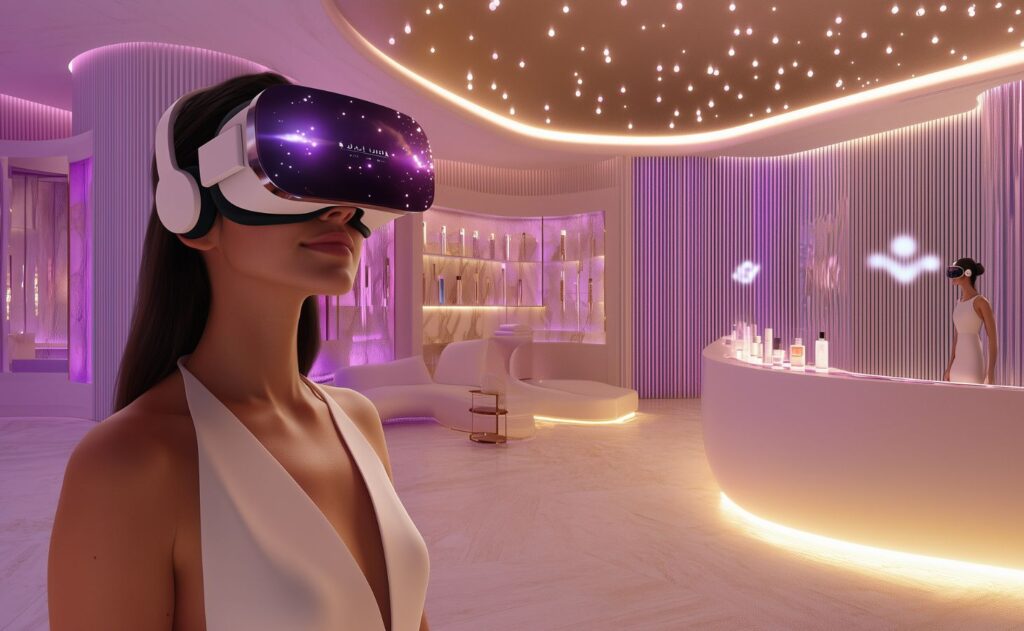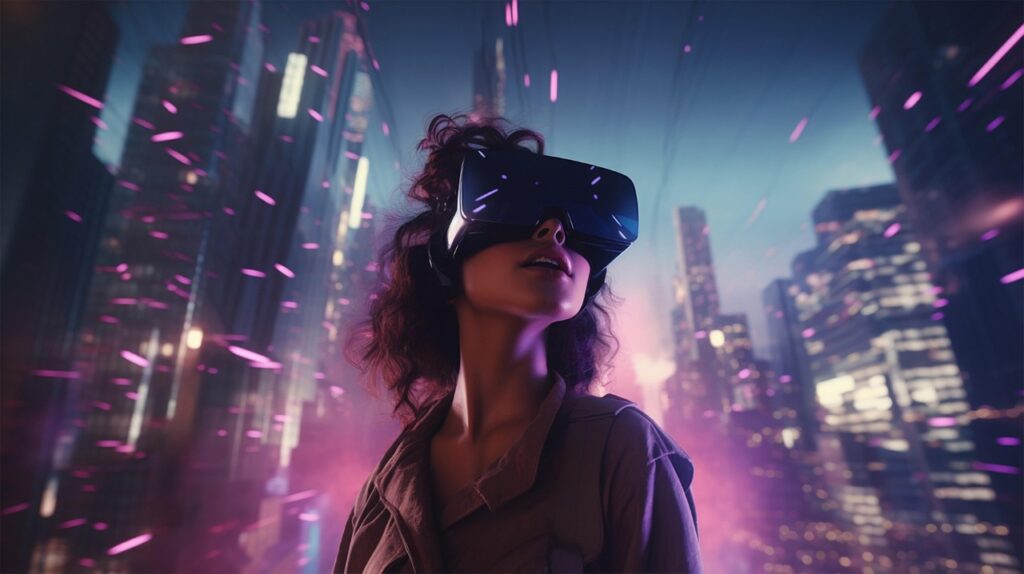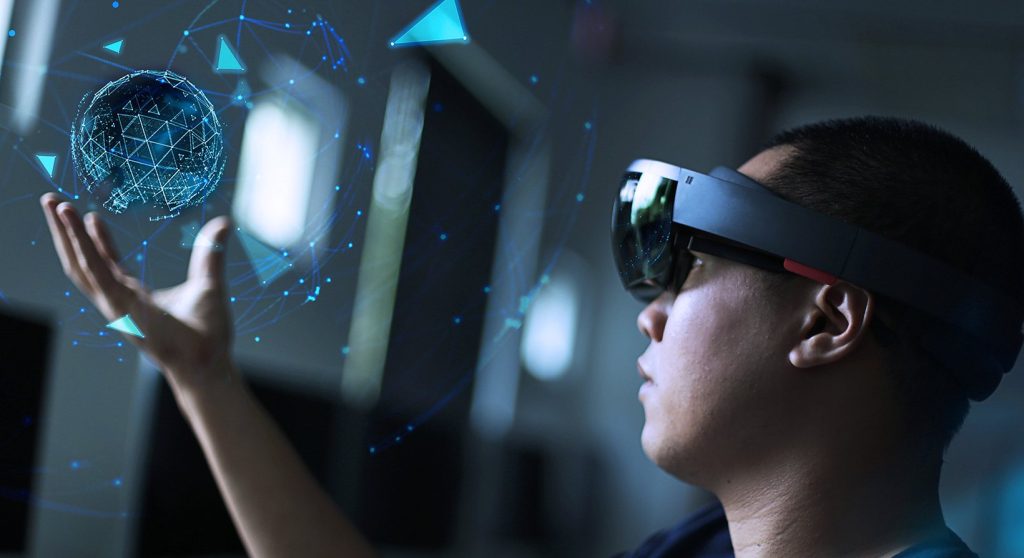Music has always had the power to move, connect, and transform. But what happens when sound meets spatiality? When rhythm interacts with space, and you’re not just listening, you’re living the music. VR music is reshaping how we compose, perform, and experience sound, yielding results that are nothing short of immersive. Whether it’s a live virtual concert or a spatialized symphony you can walk through, the boundaries between sound, space, and self are dissolving. In the following sections, we’ll explore how XR enhances music experiences, transforming both the industry and the lives of its creators and audiences.
The Impact of VR in Music Experiences
In traditional formats, music envelops the listener from fixed speakers or headphones. In VR, however, sound sources can be placed in 3D space around the user. In this way, music becomes navigable, explorable, and capable of immersive experiences.
In a virtual soundscape, the audience is no longer a passive observer. As listeners move through the environment, the music responds. You might walk through an orchestral piece, hearing different instruments more clearly depending on your position. Generally speaking, VR in music makes it completely personalized.
By synchronizing sound with immersive visuals and spatial design, XR enhances emotional connection. A well-designed immersive music experience doesn’t just amplify volume; it deepens the meaning of music itself.
How XR Is Transforming the Music Industry
Virtual and augmented reality have a profound impact on music, affecting both artists and listeners. Some of the main features that XR offers for music are:
1. Virtual Concerts
Artists are no longer confined to physical venues. VR platforms enable fully virtual performances where the entire environment is part of the show. Imagine concerts set within surreal landscapes, responsive scenarios, or narrative-driven music worlds. These experiences attract millions, redefining fan engagement while guaranteeing extreme accessibility. Travis Scott’s Fortnite Virtual Concert, for example, drew 12 million live viewers according to Pitchfork’s reports of the event.
2. Immersive Tools for VR Music Production
Musicians can now create inside VR using spatial audio tools and 3D interfaces. Sound becomes a tactile medium, something you can move, stretch, and reshape in real time. Such freedom opens new workflows and allows listeners to explore music like never before.
3. Fan Interactions Beyond the Stage
XR enables deeper, more interactive relationships between artists and audiences. Augmented reality meet-and-greets, immersive listening parties, and branded interactive content are creating new forms of engagement that feel personal and unforgettable. The adoption of these solutions is being perceived positively by fans, as in 2023, only 25% of concert attendees participated virtually through AR/VR hardware (zipdo.co).
4. New Business Models in the Music Industry
From selling virtual tickets to releasing XR-enhanced albums, this technology unlocks fresh business opportunities. Music labels are seeing immersive formats not just as add-ons, but as essential pillars of modern distribution, capable of driving audiences towards new ways of perceiving sound. The immersive entertainment sector generated a staggering $114 billion in revenue and is projected to grow to $442 billion by 2030 (grandviewresearch.com).
The Advantages of VR Music for Artists and Fans
Benefits coming from VR Music affect artists and fans in many different ways, among the most advanced and interesting ones, we can mention:
1. Spatial Composition Reimagines Songwriting
In immersive environments, artists aren’t limited by two-dimensional timelines. They can place different musical elements in virtual space, such as left, right, above, and behind, crafting songs that feel like environments. These features enable a cinematic approach to music, making it more interactive.
2. Global Performance without Physical Constraints
With VR concerts and XR platforms, even independent artists can now reach global audiences without the need for touring. Without any venue or logistics to handle, creativity can flow at best and be shared directly with the maximum number of fans, mainly thanks to the improved accessibility that these solutions provide.
3. Enhanced Features and Collaborations
XR invites collaboration between musicians, technologists, visual artists, and developers. This fusion gives rise to new genres, innovative performance formats, and advanced experiments that push the boundaries of music even further. Through XR, artists can connect and work on their music commonly without the need for physical movement.
Immersive Music for a New Listening Experience
As we previously mentioned, VR in Music also has an impact on the listening experience for fans. Allowing them to live music and explore sound in entirely different ways than in the past. Nowadays, fans can immerse themselves in the story rather than just watching a video or listening to a track.
This is possible thanks to the blend of music with multisensory input, from visuals to direct interaction and spatial navigation. Fans feel more connected, remembering the feeling of music, rather than just the melody. Moreover, thanks to immersive virtual music events, music has become a new form of social experience, mimicking the collective energy of festivals without physical borders.
Successful Use Cases for VR in Music
VR Music is an entirely new field, rich in terms of innovation and possibilities. Among the best witnesses of its potential, we can find:
1. Bejby Blue WebAR Concert
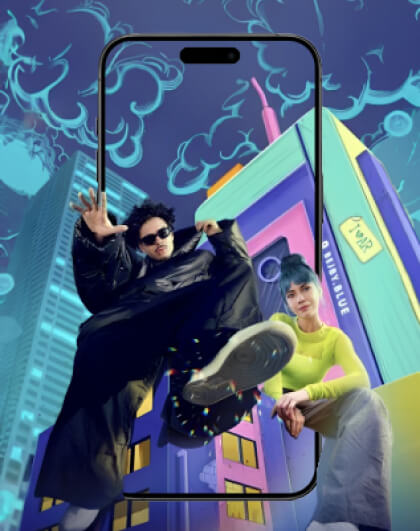
YORD pioneered Europe’s first-ever web-based AR concert that didn’t require any app download. By simply scanning a code, users were immersed in a high-quality digital performance, blending accessibility with immersive storytelling. This experience opened new opportunities for VR Music and for brands to enhance their engagement through immersive, unique solutions.
2. Artmaster VR Piano Training
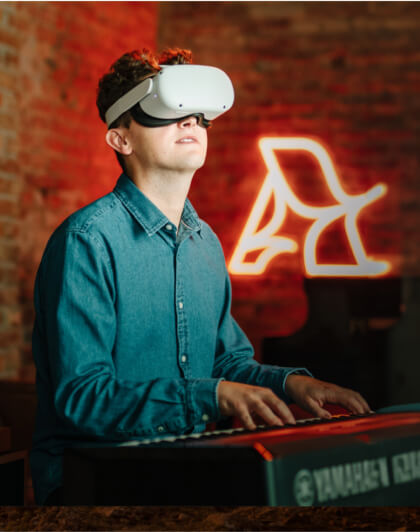
With Artmaster, YORD brought XR into music education. The app utilizes VR to transform piano training into an immersive experience, redefining how students learn rhythm, technique, and muscle memory. Recognized with an XR Award, this project proved that VR is not just for gaming experiences, but also a pillar of modern innovation.
3. XR Music Visualization for Performances and Installations
Our studio has developed audio-reactive environments that visually respond to sound in real time. Whether for concerts or museum installations, these tools blur the line between art and sound technology, making music visible.
Tune In to the Future of VR Music with YORD
Virtual and Augmented Reality in the music industry no longer represent simple experiments; they have become central platforms for creation, performance, and connection.
XR opens up scalable, immersive formats for both live events, making music even more emotional, and for musicians to unlock new creative processes through remote collaboration and spatial sound experimentation.
YORD stands at the forefront of this evolution, pioneering the new frontiers of VR Music not just to build immersive tech, but especially to develop new ways for people to feel, connect, and create.
Contact us to find out more about our VR Music technologies and solutions.
👋 Get in touch
By clicking the “send” button, I agree to the collection and processing of my personal data as described in the Privacy Policy.


